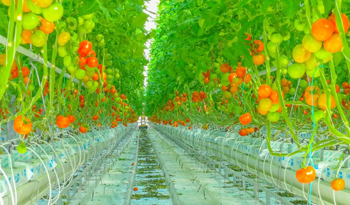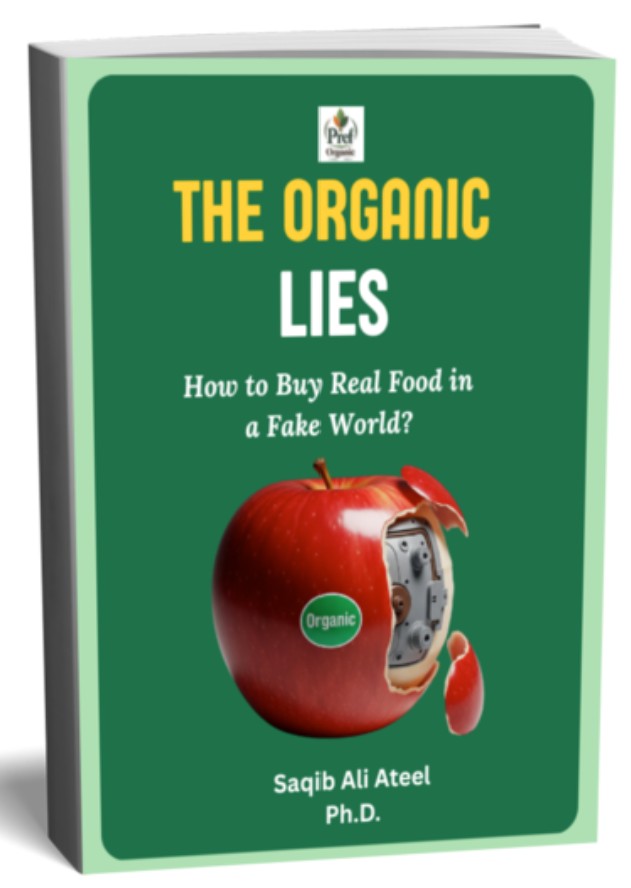Note: This scholarly article on vegetable grafting is a contribution from Mr. Bilal Akram and Dr. Muhammad Azher Nawaz from the University of Sargodha, Pakistan. This technique can be used in organic as well as natural vegetables. We are thankful to both scholars for contributing such a piece of valuable information for our website visitors.
Saqib
A New Technique to Get More Produce With Fewer Expenses On Vegetable Grafting
Grafting is a centuries-old technique used to unite two different plants of the same species or of different species for desirable traits. In fruits, grafting is an ancient technique, but in vegetables, it is comparatively new. The oldest record of grafting vegetable plants has been discovered in 500 AD in China. Farmers joined together multiple gourd plants to develop a better root system to increase the size of gourd fruit that was used for rice storage during the winter season. Now a day, it is used in many countries which include Spain, Germany, Turkey, America, Canada, and Mexico. Commercial production and demand for vegetable grafted plants continue to increase in Asia and Europe.
It is an environment-friendly technique use to control soil-borne diseases, to induce resistance or tolerance against abiotic and biotic stresses to increase the yield of susceptible cultivars. It is currently used for different vegetables such as watermelon, melon, cucumber, pepper, tomato, and eggplant. Many countries utilize vegetable grafting and get a better yield from limited land.
Benefits of Vegetable Grafting
The yield of vegetables (tons/hectare) in different countries.

| Country | Melon | Watermelon | Cucumber |
|---|---|---|---|
| Pakistan | 12.2 | 14.64 | 15.4 |
| China | 33.39 | 40.29 | 48.19 |
| Spain | 31.53 | 47.83 | 87.19 |
| Japan | 22.96 | 33.1 | 49.44 |
| America | 26.77 | 33.48 | 16.2 |
| Turkey | 16.9 | 24.67 | 26.98 |
Factors in Grafting Techniques
Here is an overview of different factors that are directly supported by the use of vegetable grafting techniques, and these factors are of great importance for Pakistan.
Water
Water is becoming an increasingly scarce resource in many parts of the world, including Pakistan. The competition among industrial and agricultural use of water creates the need for improving irrigation practices. By the use of grafted transplants, we can minimize the requirement of water by selecting a drought tolerance root stock. There is evidence of improving the drought tolerance of plants by use of vegetable grafting such as grafting of tomato on eggplant helps to survive transplants under drought stress conditions due to its healthy roots system compared with tomato. Grafted transplants help plants survive under waterlogged conditions but also increase the chlorophyll content in the leaves. Grafting improves flooding tolerance of bitter gourd when grafted onto lufa. We can save plenty of water by use of vegetable grafting technique.
Agricultural Land
Agricultural land is speedily converted into barren land due to salt accumulation. Every year thousands of acre land became useless because of the high rate of salts. As salinity is a significant threat to agricultural and there is no effective system to reclaim these types of degraded lands, and we have to live with them. Using salt tolerance and vigorous root stock, we can use salt effected areas for growing vegetables. Wild types of root stocks for different plants are tolerant of salt to some extent.
Quality Fertilizers
In Pakistan, farmers are facing a shortage of quality fertilizers, and the government also fails to facilitate them. An increase in the price of fertilizer is a big issue for the farmer. Farmers are not applying the fertilizers according to recommendations due to their high rates. By the use of vegetable grafting, we can save more than 50% of the fertilizers without compromising yield. By using vigorous rootstocks, the frequency of agrochemical applications can be significantly reduced. In watermelons, the number of chemical fertilizers can be reduced to about one-half to two-thirds compared with the standard recommendation for the non-grafted plants.
Nutrient Uptake
Nutrient uptake can also improve by grafting. Drought tolerance provided by either rootstock or scion develops nitrogen fixation in soybean. Grafting also enhances the absorption and translocation of nitrogen, magnesium, phosphorus, and calcium and several other essential nutrients. Improved nutrient uptake in grafted transplants also increases photosynthesis under unsuitable climatic conditions such as weak sunlight and low level of CO2.
Environment
Today’s most dangerous threat to the agriculture sector is changing environmental conditions like extremely low and high temperatures. Growing seasons, as well as the growth habit of plants, are severely affected due to sudden changes in temperature. In grafting, we use rootstock, which is usually temperature hardy, may help to compete with rapidly changing temperatures. To reduce resistance against low or high-temperature grafting is used. Grafting not only makes plants resistant to survive under extreme weather conditions but also increases the yield. Figleaf gourd rootstock has been used commercially for watermelon, cucumber, and melons to increase tolerance to low soil temperature. Grafting helps plants to survive under low temperatures due to the presence of more Linolenic Acid. Pepper had a higher yield under high temperature when grafted onto sweet pepper rootstock.
Metal Stress
Vegetable grafting is proved as a shield against heavy metals. Grafted plants survive effectively under heavy metal stress compared with non-grafted plants under the same environmental conditions. Grafting minimizes the negative effect of copper, cadmium, vanadium, and manganese toxicity.
Control Diseases
Using vegetable grafting, we can control diseases attack on crops by using resistant rootstock. The disease tolerance in grafting seedlings may be entirely due to tolerance of rootstock to the diseases. Soil-borne fungal diseases can be effectively controlled by using vigorous rootstocks.
Crop Yield
Grafting has a direct effect on the yield of the crop. By using selected, compatible, and vigorous rootstock, we can get maximum marketable yield. In oriental melons, increases of 25-50% yield have been reported by using grafted plants. There is also evidence of increased yield in tomato by 54%. In other vegetables such as cucumber, chili, eggplant, and watermelon yield was increased by up to 8.80-57%, 9.20%, 27.70%, and 22.7-43%, respectively, by using grafted transplants.
Product Quality
Grafting is a practical approach to improve fruit quality under both optimum growth conditions and salinity. Grafted plants have higher marketable yield, fruit quality, and sugar content of fruits depending on rootstocks. Total phenolic contents increased in grafted eggplants compared with non-grafted plants.
Why Vegetable Grafting in Pakistan?
Pakistan is a growing economy. By using vegetable grafting techniques, we can minimize the impact of the shortage of water, land, and fertilizers and can also handle changing environmental conditions. The agriculture department, public universities, private universities, and private sector have to work on vegetable grafting to make it easier for the local farmers. They should provide them with quality transplants to move towards precision agriculture.
There is a need for vegetable grafting in Pakistan to boost the production of vegetables and to take it at the level of other countries to full fill the increasing demand for vegetables. By the use of grafted transplants, the use of pesticides is minimized; thus, it promotes organic vegetable production.
Major Limitations/ Constraints in Adopting Vegetable Grafting in Pakistan
There are several limitations in the successful utilization of vegetable grafting technique in Pakistan that includes
• Lack of awareness among farmers
• Lack of interest in the public sector
• Lack of funds for research and development
• Uncharacterized germplasm for rootstock and scion cultivars
• Shortage of infrastructure (greenhouse, germination, and healing chambers)
• Enhanced utilization of seeds for the preparation of grafted transplants.
• Lack of trained labor/staff
• Expected high price of grafted transplants
References:
Nawaz, M.A., F. Shireen, Y. Huang, B. Zhilong, W. Ahmed, and B.A. Saleem, 2017. Perspectives of vegetable grafting in Pakistan: current status, challenges, and opportunities. International Journal of Agriculture and Biology, 19: 1165-1174
Express Your Opinion
We find value in differences between learning, interpreting and overall opinions. Please share your thoughts freely about this topic, but always remain respectful. You can preview and edit on the next page before your submission is sent in. You will also be informed about this site's privacy policies. Thank you for your contribution.
